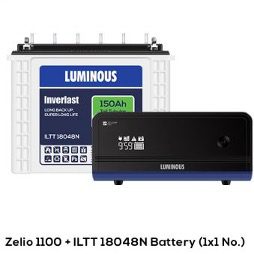5 Reasons Why You Need To Upgrade Your Inverter With Battery

The Earth is getting hotter with each passing year. The average maximum temperatures are rising across the cities, globally. India is no exception. And to top it all, the energy infrastructure in India is not what one would expect it to be. There are still several cities, towns and villages that experience long and frequent power cuts. In a scenario like this, one cannot afford to not have a power backup at home.
But just like any other device, home inverters and their batteries might show reduced performance over time. Your power requirements might change, too. In that case it is important for you to ensure that your inverter with battery is working fine. But just in case you are facing any of the below-mentioned issues then you may want to consider upgrading your inverter with a battery.
1. Increase in Load
One of the most common reasons to upgrade your inverter is – increase in load requirement. As time passes, people add more appliances to their households. So let’s say a basic household that needs to run a few fans, tube lights, bulbs, a TV and a refrigerator would require a small inverter with a VA Rating anywhere around 1000 VA. However, another household that needs to run additional appliances such as AC, washing machine, geysers, etc would require a high capacity inverter with VA Rating that could range anywhere between 2 KVA to 10 KVA or sometimes even more, depending on the load.
When buying a new inverter or upgrading your existing inverter, you need to pay attention to the following
- Your Power Requirement: It is the total power consumed by appliances that you wish to run on your inverter.
- VA Rating: It is a measure of an inverter’s output capacity. More the load, the higher the VA rating that you would need.
2. Battery Defects
If your inverter alarm beeps again and again – or wrong codes are being displayed on the monitor, this could be an indication that you need to upgrade your inverter battery. This may also occur when the battery’s cables or wiring are disturbed. Also, if the inverter switches from the main grid to the battery on its own, it can affect the battery’s performance. Thus, it’s recommended you opt for a maintenance check. Contact the customer care – or get in touch with a technician, and get the battery fixed. If the issue isn’t repairable, consider replacing the batteries.
3. Inverter Charging Issues
Sometimes, the inverter tends to act up. It might not charge at all – or stop charging suddenly. This can occur due to grade separator issues or a dead battery. Replacing the battery is recommended in such cases. However, charging issues can also occur due to rusted terminals, electrical faults in the power outlets, fused active materials, or burnt rectifiers. To fix these bugs, you can call for a technician or contact your manufacturer’s customer service – before you choose to upgrade the inverter.
4. Occurrence Of a Loud Humming Noise
When you put the inverter in the backup mode – and hear a loud hum, it’s due to waveform deterrence. Often, old inverters make such noises. This occurs because they make use of square wave technology. To prevent noises and get greater power backup, upgrade to an inverter with sine wave technology. It is more efficient and best for homes that use voltage-sensitive appliances.
5. Inverter Breakdown
Inverter breakdowns usually occur due to disconnected or loose battery terminals. If there is a defect in the power switch or the battery is damaged, call for a technician – and get it fixed. Inverter breakdowns are also a result of an overload. If an overload causes your inverter to trip, reset the system. Also, if your inverter is old, you may want to consider an upgrade.
Is your inverter going wonky?
If you have been facing issues with your inverter (or the battery) despite repeated repairs then it is high time you replace it with a new one. You may consider buying it from Luminous India as they are one of India’s most reputable power solutions brands. Also, they have a wide range of inverter batteries that you can choose from depending on your power consumption needs and budget.
